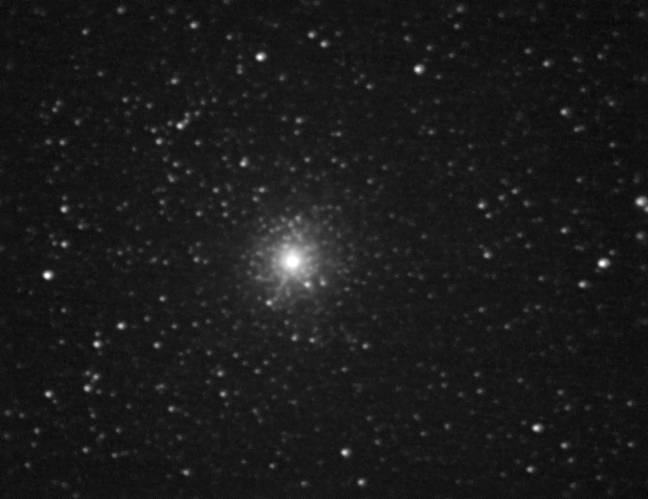M54
Messier 54 is a quite conspicuous globular cluster, at magnitude 7.6, although it is not easy to resolve. This cluster is comparatively concentrated, with a bright core only 2.1' in diameter. The apparent magnitude of the brightest stars is about 15.5 it is receding from us at about 142 km/s. M54 has at least 82 known variables, the majority of 55 being of RR Lyrae type, but there are also two semi-regular red variables with periods of 77 and 101 days. Its distance, for years, was estimated to be about 50-65,000 light years. However, in 1994, the exciting discovery was made that M54 was probably not a member of our Milky Way at all, but of a newly discovered dwarf galaxy ! This galaxy is now called the Sagittarius Dwarf Elliptical Galaxy, and is one of the most recently discovered Local Group galaxies. Since the Sagittarius Dwarf is estimated to lie at a distance of 80-90,000 light years, a recent estimate for M54 was given at 87,400 light years. At this distance, M54 would be one of the most luminous known globular clusters with an absolute visual magnitude of -10.01, a brilliance of about 850,000 suns like ours, and outshined only by spectacular Omega Centauri in our Milky Way. Also, its diameter would become as large as about 300 light years. It is about three times as distant as its two apparently close neighbors, M69 and M70. And perhaps most interesting, it would make M54 the first extragalactic globular cluster ever discovered, by Charles Messier on July 24, 1778, and thus add an extra first to Messier's list of fame.
M54 is easy to find as it is close to Zeta Sagittarii, but while the cluster is bright, it is small so that it may be overlooked in smaller binoculars or finder scopes (i.e. taken for a star). Because of its large distance, this globular cluster is difficult to resolve. Binoculars and small telescopes show it as a round nebulous object gradually fading toward the edges. A 4-inch shows a mottled texture, under good conditions with some starlike knots, which John Mallas reported as suggestions of stars. It stays unresolved even in large amateur telescopes, which still show only mottled texture; Kenneth Glyn Jones describes it as looking more like a planetary nebula at first sight.
 |
Taken August 14, 2010. Exposure is 150 seconds but optical arrangement was not recorded. |